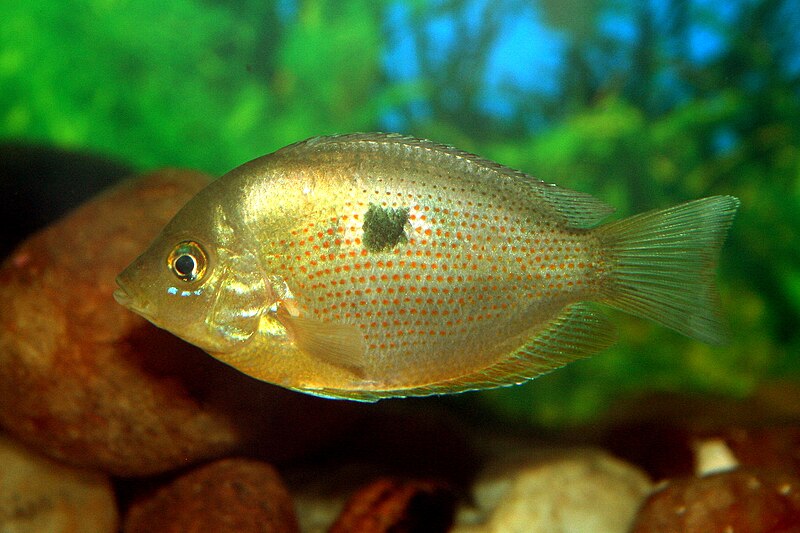So this is the final part of this long blog series highlighting my favorites…here are my final five:

Serranochromis are members of a family of large growing cichlids which currently contains ten species and two subspecies. They hail from the rivers and lakes of Africa, and are not common in the hobby due to their large size. In many ways they resemble the bass that we fish for, and some serranochromis are valued by the sport fishing industry. I will talk a little about one species on my wish list (my next blog topic maybe?), Serranochromis altus. This deep bodied specimen can grow to 17” and has a large mouth like a largemouth bass. The male’s the front quarter is olive brown with the remainder of his body being greenish in color. There are also many reddish spots visible in the fins, with the anal fin having large egg spots. Due to its large mouth, tankmates should be chosen with caution – if it fits, its gone.
Etroplus – This small family of cichlids contains 3 species and are close relatives of Paretroplus from Madagascar. They are found in Southern india and Sri lanka. The three species are:
Etroplus canarensis, known as the Pearlspot cichlid, this particular species is found in a couple of rivers in the South Canara area of India. It lives solely in freshwater as opposed to the other two, which prefer brackish conditions. It attains a length of 8 inches in the wild, but for some reason, in the home aquarium it seems to stop growing at about 4 inches.
 Etroplus maculatus, the Orange Chromide is a common offering. There seems to be 2 forms of the Orange Chromide the wild – one is golden with red spots, and the variant which is fully orange. They are known to pick parasites off the Suratensis.
Etroplus maculatus, the Orange Chromide is a common offering. There seems to be 2 forms of the Orange Chromide the wild – one is golden with red spots, and the variant which is fully orange. They are known to pick parasites off the Suratensis.
Etroplus suratensis, the Green Chromide, is a large schooling fish, growing to about 14 inches. The body is greenish-silver with dark verticle bands and bright speckles. It is primarily a herbivore and it will eat soft leaved plants. Newly hatched fry will graze on the sides of the parents, just like discus.
Myaka myaka – This West African odd ball reaches a length of 4 inches. The body has a silvery to green tint in both sexes, but breeding males become bluish-black to black with all fins the same color. This species is critically endangered in the wild, but captive specimens are sometimes available.
And last, but not least, Iranocichla hormuzensis. This particular species hails from the rivers draining into the straits of Hormuz in Southern Iran. When breeding, the male is an outstanding specimen – he turns black with white-silver dots all over his body and markings in the dorsal fin. Not much info is known, but it seems that due to the restricted range of the fish and the wars and oil pollution in the region, they may be on their way to extinction. So sad, for it is truly a magnificent looking fish.
Well thats it for my top ten favorites from the different regions! It just goes to show how diverse these fish are and why there will always be “cichlidiots” around. Hope everyone had fun reading–and feel free to share some of your favorites too!
Jose
 That Fish Blog – Aquarium Advice and Information
That Fish Blog – Aquarium Advice and Information
